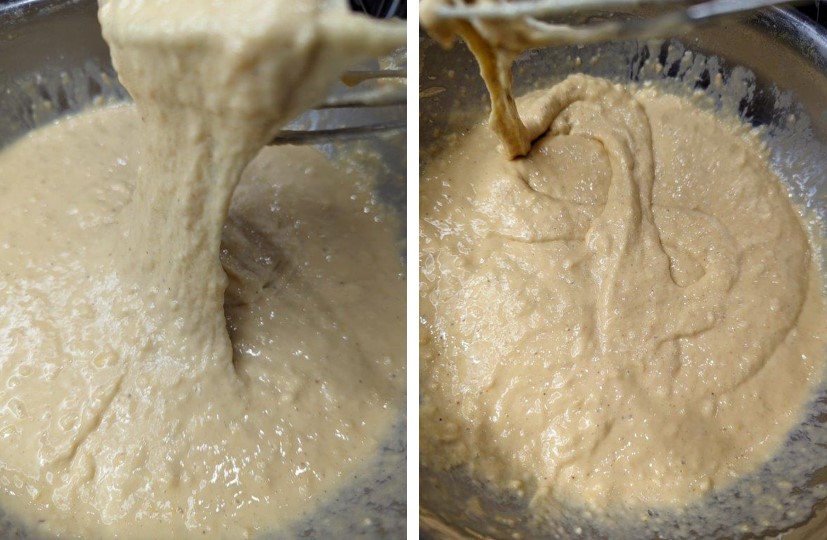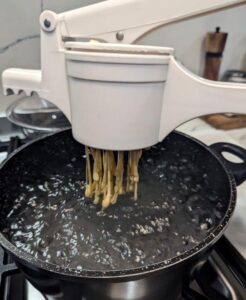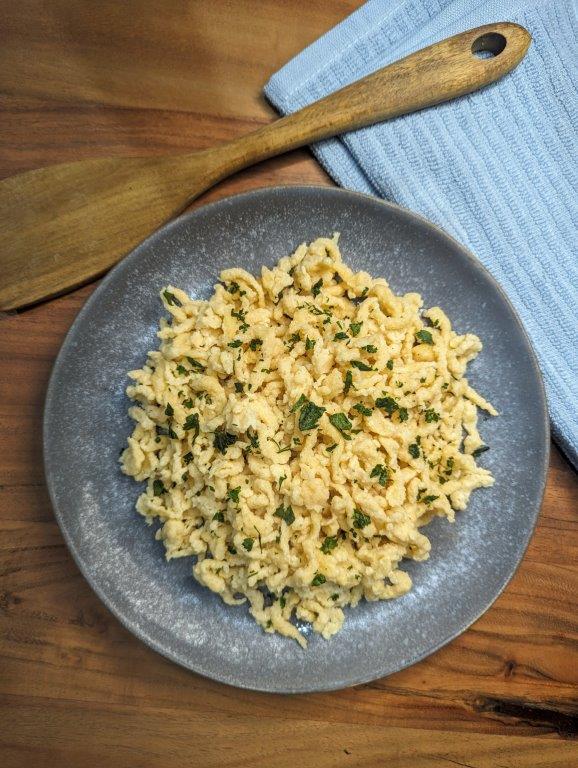Important: You’ll need a potato ricer to make this recipe. If you don’t have one, you could try a colander with very large holes or a metal grater but I’ll confess, I’ve never tried these because I don’t think they’ll work very well! It’s important that the holes are large enough for the dough to easily pass through (about 3-5mm / 0.1-0.2 inch), and far enough apart that the dough doesn’t rejoin and stick together after passing through. I use a ricer with 4mm / 0.15 inch holes that are 8mm / 0.3 inches apart.
- There’s a bit of leeway with the measurements of these ingredients – they don’t need to be absolutely exact for the spaetzle to turn out well. I’ve used specific measurements above so you can adjust for the number of servings you want, as this recipe easily scales up or down. If you scale the recipe and end up with a fraction of eggs, scale the egg up and subtract some milk (or vice versa).
- For 4 serves:
- 400g / 14 oz flour equates to about 2 & 2/3 cups.
- 330 ml / 11 fl oz milk equates to 1 & 1/3 cup.
- Note, this recipe (unadjusted) serves 4 as a side.













